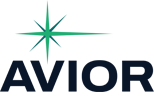Why Cash Flow Planning Is Essential for Your Long-Term Financial Success
Ever notice how some people earn tremendous incomes yet still struggle financially, while others build substantial wealth on modest salaries? The difference often isn’t about how much money comes in, but rather the intentionality behind where it goes. This is the essence of cash flow planning – and it might be the most underappreciated skill in personal finance.
Think of cash flow planning as the GPS for your financial journey. Without it, you’re essentially driving blindfolded, hoping you’ll somehow reach your destination. You might be earning well and investing occasionally, but if you’re not strategically directing those dollars, you’re leaving your financial future to chance. And in the world of personal finance, chance rarely favors the unprepared.
The Foundation: Why Cash Flow Matters More Than Income
Most people fixate on income as the holy grail of financial success. “If I could just make $X more per year, everything would fall into place.” But higher income alone rarely solves financial challenges – it often just scales up spending patterns.
The Paradox of High Income, Low Wealth
It’s not uncommon to see high-earning professionals like physicians, attorneys, or executives who struggle to accumulate significant savings despite substantial incomes. Simultaneously, individuals with more modest earnings often build impressive wealth over time. The difference typically comes down to intentional cash flow management.
High income provides opportunity, but without proper cash flow planning, that opportunity can easily evaporate. PYMNTS Intelligence found that nearly 48% of households earning over $100,000 annually live paycheck to paycheck. Their challenge isn’t earning money – it’s directing that money purposefully.
The Power of Income Allocation
Cash flow planning isn’t about restricting spending or creating deprivation. It’s about intentionally directing your money toward what matters most. This requires:
- Understanding exactly where your money currently goes
- Aligning spending with your true priorities and values
- Creating systems that automate good financial decisions
- Building flexibility for life’s inevitable surprises
When your spending aligns with your values and priorities, financial progress becomes nearly automatic. The challenge for most people isn’t mathematical – it’s psychological and behavioral.
The Small Decisions That Shape Financial Destinies
The most dangerous financial decisions aren’t the big ones. We carefully consider major purchases like homes and cars. The real wealth destroyers are the small, seemingly insignificant expenses that fly under the radar.
The Subscription Economy Trap
The modern subscription economy has mastered the art of extracting wealth in small, painless increments. The average American now maintains 12 subscription services, often without fully tracking the collective impact.
Consider what happens when someone signs up for multiple streaming services, meal kits, software subscriptions, and membership programs. It might start with just a few dollars here and there, but can easily grow to hundreds monthly. What if those funds were instead directed toward retirement savings or debt reduction? At 7% average annual returns, $300 monthly invested over 25 years could potentially grow to over $225,000 – a significant addition to a retirement portfolio that many people inadvertently sacrifice for services they may not fully utilize or value.
The Coffee Myth and Real Cash Drains
Financial advice often targets small luxuries like coffee, but this misses the point. A daily $5 coffee that brings genuine joy and productivity might be worth every penny. The real issue is unconscious spending – purchases that don’t align with your values or bring proportional happiness.
Research suggests that the average household wastes approximately $1,500 annually on unused food, while unnecessary bank and credit card fees can cost hundreds more each year. These aren’t decisions that enhance life – they’re financial leaks that compound into significant opportunity costs over time.
The Three Pillars of Cash Flow Mastery
Effective cash flow planning rests on balancing three critical elements: income optimization, debt management, and strategic investing. When these work in harmony, financial progress accelerates dramatically.
Income Optimization: Beyond the Paycheck
Income optimization starts with maximizing your primary earnings, but extends far beyond that:
- Negotiating appropriate compensation for your skills and experience
- Developing additional income streams that diversify your financial foundation
- Minimizing tax burdens through legal, strategic planning
- Creating systems for income growth that don’t require constant time investment
A comprehensive cash flow plan doesn’t just address spending – it looks critically at every dollar coming in and asks how to increase that flow while maintaining life balance.
Debt Management: Strategic vs. Toxic Borrowing
Not all debt is created equal.
Strategic debt – borrowing that acquires appreciating assets or increases earning capacity – can accelerate wealth building.
Toxic debt – high-interest consumer borrowing – does the opposite.
Consider the hypothetical scenario where someone carries $15,000 in credit card debt at 20% interest while simultaneously maintaining $20,000 in a savings account earning minimal interest. This financial disconnect could cost thousands annually – a cash flow leak stemming not from overspending but from uncoordinated financial decisions.
Effective cash flow planning integrates debt management by:
- Strategically eliminating high-interest toxic debt
- Leveraging beneficial debt structures when appropriate
- Creating systematic debt reduction plans that don’t compromise other financial goals
- Preventing new debt accumulation for non-appreciating assets
Strategic Investing: Making Money Work Harder
The ultimate goal of cash flow planning is redirecting money from low-value spending to high-value investing. This creates a compounding effect where today’s redirected dollar grows substantially over time.
For example, if someone were to identify $500 monthly in expenses that don’t align with their priorities and redirect that amount to investments, the long-term impact could be substantial. At an 8% average annual return, that $500 monthly contribution could potentially grow to over $1 million over 30 years – transforming relatively modest monthly savings into significant wealth through the power of consistent investing and compound growth.
Effective investing within cash flow planning means:
- Starting early to maximize compound growth
- Maintaining consistent contributions regardless of market conditions
- Automating investment transfers to remove emotional decision-making
- Gradually increasing investment percentages as income grows
Warning Signs of Cash Flow Problems
Cash flow challenges rarely appear suddenly. They typically reveal themselves through subtle warning signs that, when recognized early, can prevent significant financial damage.
The Safety Net Test
The most basic cash flow checkup is the emergency fund assessment. If unexpected expenses consistently drain your savings or drive you toward credit cards, your cash flow system needs attention.
Financial security begins with maintaining 3-6 months of essential expenses in liquid savings. This buffer prevents short-term challenges from derailing long-term progress.
The End-of-Month Squeeze
If you consistently find yourself tight on funds before the next paycheck arrives, your cash flow system needs rebalancing. This pattern often indicates spending that’s misaligned with income – a fundamental cash flow issue.
The Debt Acceleration Check
Healthy cash flow should naturally reduce debt over time. If your debt balances remain static or grow despite making payments, your cash flow system is failing to make financial progress.
One clear warning: making only minimum payments on credit cards. This approach can extend repayment periods by decades and multiply the effective cost of purchases by 2-3 times the original price.
Five Practical Steps to Cash Flow Mastery
Transforming your cash flow doesn’t require financial genius – just intentionality and consistent execution of fundamental principles.
1. Track and Categorize Your Current Spending
You can’t optimize what you don’t measure. For at least 90 days, track every dollar spent and categorize each expense. This baseline reveals your current cash flow reality and identifies opportunities for realignment.
Numerous apps simplify this process, automatically categorizing transactions and highlighting spending patterns. This clarity often reveals surprising insights about where money actually goes versus where you think it goes.
2. Create Purposeful Spending Categories
Rather than imposing arbitrary budget categories, develop personalized spending divisions that reflect your values and priorities:
- Necessities: Housing, food, transportation, utilities, minimum debt payments
- Wealth Building: Retirement contributions, investments, additional debt reduction
- Lifestyle Choices: Entertainment, dining, travel, hobbies
- Giving: Charitable contributions, family support
This framework ensures essential needs are met first, wealth-building becomes non-negotiable, and discretionary spending aligns with your values.
3. Automate Financial Priorities
Structure your cash flow system to automatically direct money toward priorities before discretionary spending. This might include:
- Automatic retirement contributions from each paycheck
- Scheduled transfers to investment accounts on paydays
- Automatic extra payments toward high-interest debt
- Dedicated savings transfers for specific goals
Automation removes willpower from the equation, ensuring financial priorities receive funding regardless of temporary distractions.
4. Implement Regular Financial Reviews
Schedule quarterly cash flow reviews to assess progress and make adjustments. During these sessions:
- Evaluate spending patterns against your priorities
- Adjust allocations based on life changes
- Identify and eliminate financial leaks
- Celebrate progress and wins, no matter how small
These reviews transform cash flow management from a restrictive exercise into an empowering practice that continuously aligns your resources with your evolving priorities.
5. Focus on High-Impact Changes
Rather than attempting dozens of small adjustments, identify the 3-5 highest-impact changes that will significantly improve your cash flow. These typically include:
- Refinancing high-interest debt
- Eliminating or negotiating recurring expenses
- Increasing retirement contribution percentages
- Consolidating and optimizing investment accounts
This focused approach prevents financial overwhelm while delivering meaningful progress.
Work With Us
Cash flow planning isn’t just about balancing numbers on a spreadsheet – it’s about crafting a life where your money aligns with what truly matters to you. While investment selection and retirement planning get the spotlight, it’s often the quiet discipline of intentional cash flow management that ultimately determines financial success.
The difference between financial struggle and financial freedom rarely comes down to massive windfalls or investment home runs. More often, it’s about the compounding impact of thousands of small, intentional decisions about where your money goes. When your spending, saving, investing, and earning all work in harmony toward shared objectives, financial progress becomes less of a battle and more of a natural evolution.
At Avior, we believe cash flow optimization is the secret ingredient in financial planning that too many advisors overlook. Our approach doesn’t start with investment recommendations or insurance products – it begins by understanding how money moves through your life today and how that flow can be optimized for what matters most to you. Contact Avior today for a personalized assessment. We’ll help you identify opportunities to redirect resources from low-value spending to high-impact wealth building, creating momentum toward the financial future you deserve.
Disclaimer: Nothing contained herein should be construed as legal or tax advice. Avior and our Advisors will work with your attorney and/or tax professional to assist with your legal and tax strategies. Please consult your attorney or tax professional with specific legal and/or tax questions. Investment Management and Financial Planner are offered through Avior Wealth Management, LLC, an SEC-registered investment advisor. Past performance is not a guarantee of future results. Investments are subject to loss, including the loss of principal.
No Comments
Sorry, the comment form is closed at this time.




